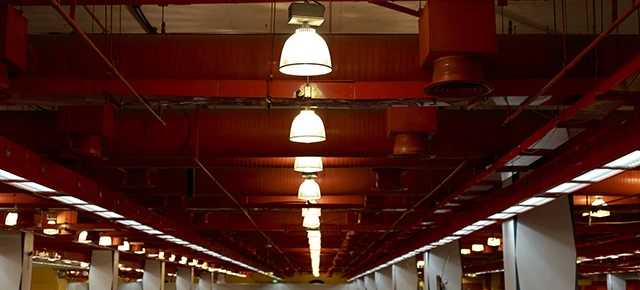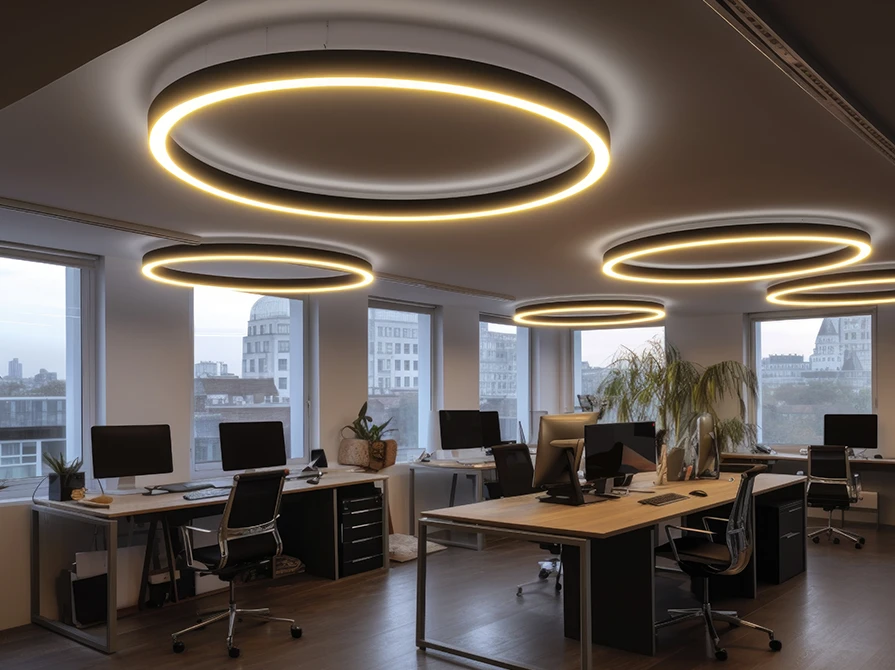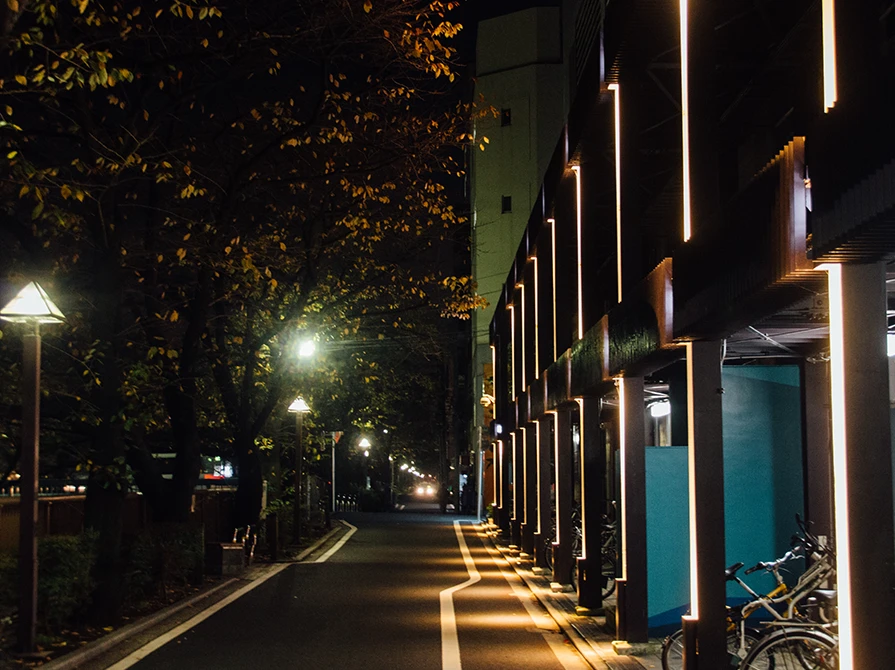


Lighting is one of the most vital components when it comes to designing an environment. Whether it's for residential, commercial, or industrial, every sector demands specialized luminaires to cater to its needs. While the residential and commercial sectors prioritize aesthetics and purpose, industrial lighting takes a more technical approach, with a strong emphasis on safety. Task illumination is crucial to facilitate precise and safe work operations in challenging environments; industrial luminaires are designed to be durable and resistant to harsh conditions like dust, moisture, and vibrations. Moreover, hazardous areas require specialized lighting solutions to prevent accidents. One of the major threats was the light fixture catching fire in an environment that dealt with inflammable gases. This gave rise to the invention of flameproof or explosion-proof lighting.
Flameproof design is a technique used as a protective measure against explosions in hazardous areas. Flameproof lighting is a type of lighting fixture designed and constructed to prevent the ignition of combustible gases, vapours, dust, or fibres prone to explosive accidents. These hazardous environments may include industrial facilities, chemical plants, refineries, oil and gas platforms, mines, and other locations where inflammable substances are present. The purpose of flameproof lighting is to ensure the safety of the working environment by preventing the light fixture from becoming an ignition source and causing explosions or fires. These fixtures are built to withstand and contain any potential explosion within the enclosure, preventing it from reaching the surrounding inflammable atmosphere.
When the industrial revolution began, the energy demand increased rapidly, boosting the need for coal mining. Essentially, mining became one of the most influential professions, and with that came technical setbacks, lighting being one of them. The miners used candles as their light source, leading to recurring lethal mishaps like fires and explosions. To sustain mining as a whole and for the safety of the miners, the first flameproof light was brought to life.
Dr. William Clanny laid the groundwork for the prototype of a flameproof lamp. He designed a glass and water structure to contain the fire within itself. Unfortunately, this lamp did not pass the safety test due to its unreliability when exposed to a mixture of explosive gases. It was also deemed impractical due to its tedious management.
The second flameproof light, called the Geordie, was created by engineer George Stephenson. However, his designs faced numerous trials and errors and did not ultimately succeed.
After laying the foundation for these safety lamps, the first working lamp was invented by scientist and investor Sir Humphry Davy in 1815. His invention was the Davy lamp, which featured a metallic mesh screen surrounding the flame. The mesh allowed air to fuel the flame and cooled it enough to prevent igniting the gas surrounding the lamp. The Davy lamp served as a test for the presence of certain gases in mines; if firedamp was present, the flame would burn with a blue "cap," the length of which indicated the gas concentration. Some lamps had marks to measure the flame's cap, making them "test lamps." Besides inflammable gases, the lamp also helped detect dangerous levels of carbon dioxide, which would extinguish the flame, warning miners of unsafe conditions.
The Davy Lamp, however, came with setbacks. It was discovered that the lamp would just reduce the chances of the explosion but not completely prevent it in all cases.
The next flameproof lamp invented in 1842 tackled a few problems that came with the Davy lamp. The Mueseler lamp, created by Liège engineer Mathieu-Louis Mueseler, earned a lot of credibility for its new advancements with respect to safety and durability but was legally put to use in 1864 in Belgian, French, and British mines.
With the advent of electricity in the late 19th and early 20th centuries, flameproof lighting underwent a significant transition. Electric lamps with sealed enclosures were developed to prevent any potential ignition sources from reaching inflammable atmospheres, making them more suitable for a wider range of industrial settings. Now, the spectrum of industries was broader and was not only restricted to mining. As industries expanded, the need for safe lighting fixtures grew exponentially.
During this period, advancements in electrical engineering and the understanding of hazardous environments led to the creation of safer and more reliable flameproof lighting solutions. The use of electricity allowed for more controlled and efficient lighting, eliminating the need for open flames in hazardous areas. The sealed enclosures ensured that any sparks or heat generated by the lamp's electrical components would not come into contact with flammable gases or dust present in the surroundings.
As industry standards and regulations evolved, explosion-proof certifications were established to ensure the reliability and safety of flameproof lighting fixtures. Various organizations, like UL and ATEX, began providing certifications to guarantee compliance with safety guidelines. Over time, advancements in materials and technology led to the development of more durable and efficient flameproof lighting solutions. New materials reduced the risk of sparking, and better heat dissipation designs improved performance.
Recent innovations have integrated smart technologies into flameproof lighting, allowing for remote monitoring, dimming, and energy management, enhancing safety and control in hazardous areas. Flameproof lighting has been adapted for specific applications, such as underwater lighting for offshore oil rigs and explosion-proof emergency lighting for critical environments. Advancements were made to make the luminaires more robust, durable, have an extended service life, and be environmentally conscious. Today, illuminating safety is not an add-on, but a necessity.
Industries like petrochemicals, LPG bottling, pharmaceuticals, metal and steel, oil and gas, and fertilizers have broadened their horizons with the help of flameproof luminaires and have created a much safer environment for all the people working in them.
As we advance into the world of new technologies constantly surpassing the scientific achievements of previous technologies, the evolution of electrical flameproof lighting reflects a continuous effort to enhance safety, efficiency, and reliability in hazardous environments, providing crucial illumination while minimizing the risk of explosions or fires.







